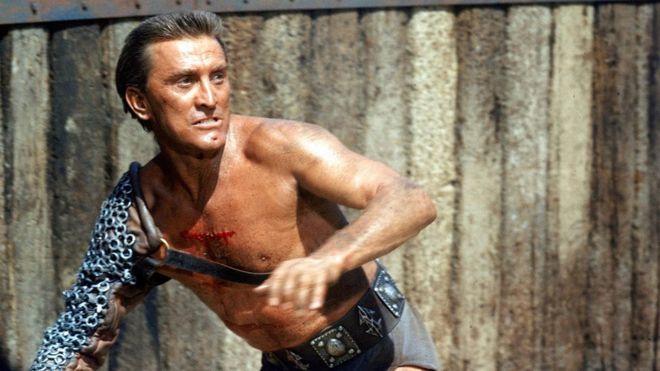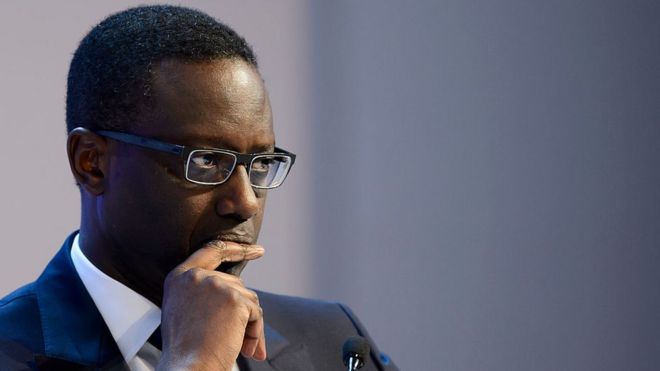Canada’s gritty railroad town of Golden, BC, doesn’t boast the historical grandeur of Banff just to the east nor the new resort skiing hype of Revelstoke over the Continental Divide to the west. But it has its own unique claim to fame: it’s the gateway to Rogers Pass, home to some of the best backcountry skiing in Canada, which is why I was here with my crew of skiers to access big mountain-style alpine lines in the Selkirk range. And it’s also home to the origin story of Western Canada’s celebrated mountain culture, which has drawn in countless mountaineers, climbers and skiers just like us for more than a century.
As we pulled out of town to head west on the Trans-Canada Highway and wound up towards the summit of the pass, I glanced to the right, my attention caught by what looked to be a European chalet almost completely hidden in trees on the steep hillside. Its antique gingerbread facade, with steeply gabled, narrow two-storey roofs and ornate framework hanging from the eves, seemed anachronous in this blue-collar town dominated by rail and sawmill, where nearly all historic buildings were consumed in a fierce fire in 1926.
That curious house is one of eight that make up a little village called Edelweiss. In this nearly forgotten cluster of homes, on the fringe of this low-profile town, lived a group of Swiss guides who left an indelible mark on this part of the world. They put up numerous first ascents in Rogers Pass and around Banff and Lake Louise and unlocked these peaks for a new wave of adventurers looking for unclimbed mountains after Europe’s had been conquered. And they laid the foundation for skiing as the winter obsession it is today in this region.
The chalet disappeared from the rear-view mirror as we drove up the highway that parallels the Canadian Pacific Railway (CPR) track, and it was immediately apparent why this formidable spine of untouched mountains presented CPR’s final hurdle in connecting the east and west of the country. Where progress had been swift from the coast and across the prairies, the seemingly impenetrable Selkirk Mountains between Golden and Revelstoke slowed building while surveyors searched for a pass and engineered the rail over its sharp landscape. In fact, the grade is so steep here that, due to the limitations in train locomotion in the late 1800s, it wasn’t feasible to haul dining cars – which had become a popular feature of rail travel – up the pass for the long journey between Banff and Golden to Revelstoke and onto Vancouver.
As a solution, CPR built Glacier House, an alpine chalet close to the summit of the pass, where passengers could get off the train for meals and stay overnight if they chose. This was the latest iteration in CPR president William Van Horne’s vision of the railway as a vehicle to bring wealthy tourists to experience the romantic lifestyle of the mountains. CPR had already played a significant role in the development of Glacier and Yoho National Parks, and built grand hotels in Banff and Lake Louise. But, concerned that guests would wander off and become lost (or worse) in these serrated peaks and crevassed glaciers so close to Glacier House – and the negative press that might ensure – CPR hired Swiss mountain guides, known as the best in the world for their depth of skill and breadth of knowledge, to stay at the chalet and guide its guests through these undiscovered mountains. This move was the advent of adventure tourism in Western Canada.
First up were Edouard Feuz Sr and Christian Haesler, brought by CPR from Interlaken in 1899. Seven more guides joined them, including Edouard’s brothers Walter and Ernest, who initially came to Canada each spring and returned to Switzerland in October. Each season, CPR worried that the guides, whom the railway relied on to help lure tourists, might not come back to Canada. So they built Edelweiss in 1912 for the guides to bring their families and stay permanently in the country.
The Swiss Village became a tourist attraction of its own, with a Disneyland-like sign at the base of the hill, visible from the passing train, announcing the presence of mountaineering greatness and the potential for hopeful climbers to leverage such accomplished guidance. The Swiss guides became well-known for guiding many tourists, aspiring climbers and serious climbers in the Selkirks. As much as CPR’s original mission was to provide the first transportation route to connect the young country, CPR’s marketing mission was to sell this part of Canada as unblemished country ripe for the adventurous to explore – and the Swiss guides were the lynchpin in this strategy. As Arthur Wheeler wrote in the Canadian Alpine Journal in 1928, “The coming of the Swiss guides created a new era. Climbing became more general, and not confined only to mountaineers of repute in alpine circles and mountain clubs.”
Parking at the highway’s zenith, we headed into the Rogers Pass Discovery Center, where staff directed us to the Swiss Guides room to don ski boots, examine maps and routes and read the avalanche report. It was like walking back in time. Glacier House no longer exists – pieces of its foundation still remain down by the Illecillewaet Campground in a ghost of its former glory – but a glimpse of its grand heyday has been preserved in antiques, recovered from the chalet, here in this room. Among the plush chairs, stone fireplace fronts, gold mantles and timber bar, with the sawtooth massif of the Hermit and Tupper mountains rising out the window, it was easy to imagine the train pulling up to Glacier Station and seeing Ernest Feuz brandishing climbing gear, waving from his post on the platform in what became a familiar sight for travellers on the CPR.
Old signs from the chalet hung from the post across the timber bar. One advertised “The Challenge of the Mountains”, complete with rentals of ponies and divided skirts for women to ride them. The journeys on offer from Glacier House for adventure seekers – Great Glacier for $1, Asulkan Glacier for $2, Baloo Pass via Cougar Valley for $5 – echoed some of the routes on our Rogers Pass ski touring maps. But it was the text at the bottom of this sign that caught my eye: “Swiss Guides are stationed at the hotel and are available for the service of tourists for the fee of $5 per day. The guides provide rope, ice axes, etc and visitors intending to climb should be equipped with stout boots, well-nailed.”
The Swiss guides, renowned for their training in snow, rock, ice, weather, maps and first aid and rescue, established nearly all the first ascents of the peaks that we were now skiing among: Uto, Mt Sir Donald, Eagle, Avalanche, McGill, Ursus, MacDonald, Tupper and many more. They scoped and climbed each route, as well as trails and campsites on the way in, before guiding clients on it – but then offered the claim of first ascent to their guests in the humble tradition of mountain guiding.
It seems almost incredible that he is in mountain climbing circles a world-famous person
Each guide notched more than 20 true first ascents to his name, though, with Ernest achieving a stunning 102. Upon Ernest’s death in 1952, then a fixture in the Golden community, as were the rest of the guides and their families, the local newspaper, Golden Star, called him a shockingly humble expert among experts: “Knowing Ernest as we do, as a very modest man, it seems almost incredible that he is in mountain climbing circles a world-famous person.”
Back in Golden, my ski gear clammy from a long day of touring the pass, I sought out the Golden Museum to learn more about the guides. Inside the Quonset hut-style building, past the early First Nations exhibits, an alcove displayed antiquated climbing gear and grainy photos of men draped in ropes and standing on improbable perches in vast landscapes. Their guides, though, were conspicuously absent. It sparked my need for tangible stories about these people, for the beating heart of this legacy.
Which is how I found Rudi Gertsch. Known around the region as the godfather of heli-skiing, he founded Purcell Heliskiing in 1974 as the next generation of Swiss guides to put down roots and exert undeniable influence here, and was the first to bring ski tourists to Golden. Before this, Gertsch said, locals had a little ski hill at the Swiss village and another ski hill that they shared with the Swedes in the Blaeberry, a neighbourhood north of town. There were no lifts; people had to walk up the slope on snowshoes carrying their skis. The first lifts in Golden weren’t installed until 1986 on Whitetooth Ski Hill.
Gertsch grew up in a mountain-guiding family in Switzerland; his father had considered coming out to Golden after World War One, when CPR was looking for younger guides to join the first generation. “My dad was quite interested – it’s always interesting for any guide where he can still do some first ascents and new climbs somewhere that’s not overdeveloped – but he decided not to,” recalled Gertsch in a Swiss accent that’s been tempered by more than 50 years in Canada. “We talked about Canada and Golden since I was a kid. I was brought up with the idea of it. Then 30 years later, I ended up here.”
He’d planned to stay for a year, but his timing was lucky: heli-skiing was just getting started, and this modern access to the deeper parts of Canada’s untamed landscape again presented a fresh frontier. “It was so new and challenging, figuring out how to do this and being out in the mountains with no one around.”
Gertsch knew some of the old guides well; Walter and Edouard were still alive when he came out in 1966. “They were like grandfathers, they were very happy to see the next generation of guides coming in,” he said. They told him the stories of the early days, including the harsh realities concealed by the shroud of mountaineering glory.
CPR had told the guides they’d have houses if they brought their families to Canada; but the architect of Edelweiss knew nothing about Swiss design: the chalets lacked insulation; they were built on a hillside that made gardening impossible; and were located outside town and across the tracks. Only a few months of the year were spent guiding; the rest of the time CPR had them shovelling snow off the chalets in Banff, Lake Louise and Rogers Pass, away from their families, for a pittance.
CPR knew that once they were here with their families, there was no way they could afford to go back
“The First [World] War followed by the Depression followed by the Second [World] War was a tough time for everyone, and they were dealing with a railroad that was more interested in making money for themselves than giving guides a decent wage,” Gertsch said. “CPR knew that once they were here with their families, there was no way they could afford to go back. And they never did.”
Gertsch passed many hours with Eduoard, the elderly guide regaling him with tales of the days when the glaciers spread all the way down to the railway. “We always had the highest respect for [the first Swiss guides]. They did some remarkable climbs in those days with nail boots, it’s amazing how they got up there. And in all the years they never had a single accident,” Gertsch marvelled. “They were treating the mountains with a lot of respect. In those days, there was no Search and Rescue, no radios, if something went wrong, they’d be out there by themselves.”
Before I left Golden, I drove across the tracks and up the icy dirt road at the edge of town to get a better look at the Swiss Village. The houses were mostly boarded up, but they were in good condition, even though no one’s lived here in years. I passed a man walking his hounds, who greeted me when I parked my truck. He introduced himself as Ken Hamilton, the owner of the village and its surrounding land. He told me that his wife Maryanne is Walter Feuz’s granddaughter. They lived in the Swiss Village up until five or six years ago, he said, and still come up almost daily to check on things. They plan to finish restoring the houses and rent them out. They’ll be temporary homes for all the skiers and climbers who come to adventure around here, drawn by the same lure of the unbridled Selkirks that’s persisted through more than 100 years.
It seems fitting that they’ll stay in the homes of the first men to open those mountains, following their routes, paths and enduring footsteps.
 GETTY IMAGES
GETTY IMAGES EPA
EPA SKY
SKY











